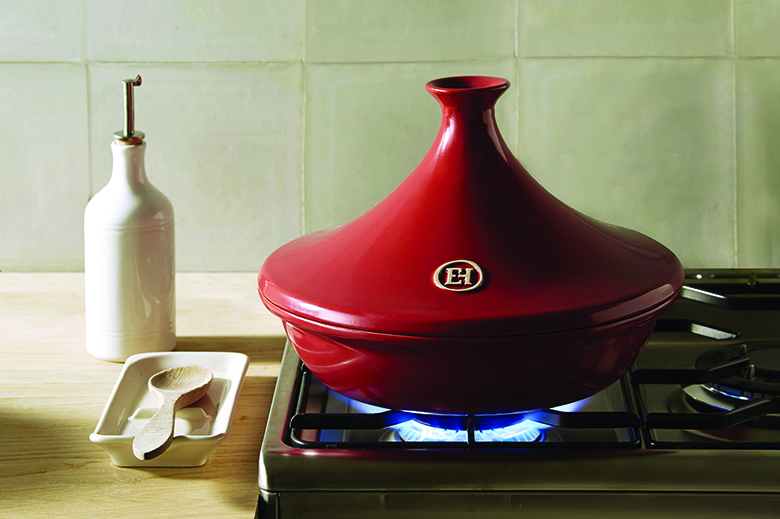
Product Reviewed: Emile Henry Tagine
Regina: I’ve wanted a tagine ever since I laid eyes on one. The elegant, cone-shaped ceramic lid reminds me of the way people may have cooked in ancient times. In fact, the earliest versions of tagines began appearing in the 10th century. Just to make sure I wasn’t being carried away with the romance of this clay-cooking vessel, I wanted to have my friend and colleague Susan try it. She’s smart, practical and doesn’t fall easily for a pretty pot.
Susan: I immediately liked the unusual shape and terra cotta color when I saw it but was a bit hesitant due to size and storage. But those concerns went away when I experimented with it and found it so easy to use. In fact, I browned my chicken in the tagine instead of a separate pan to cut down on dishes — best decision ever. The flavors stay in the base and the tagine is meant to be a one-pot cooker anyway. Simple.
Regina: Yes, there is no need to be intimidated because it works very much like a modern-day Dutch oven or slow cooker, conducting heat with gentle, uniform efficiency to cook slowly and evenly. Just picture the tight-fitting lid catching the rising aromatic vapors from a soup, stew or roast and dripping them back over the ingredients to bathe them in their own juices.
Susan: My chicken was so tender that it literally fell off the bones. Eight drumsticks easily fit in the tagine along with zucchini, tomatoes and farro. You could make the farro separately but why do that when you can just add it to the tagine during the last 20 to 30 minutes of cooking.
Regina: So why do you need this piece of equipment? It’s a fun and creative way to seal in the natural flavors of lean protein and vegetables while making them tender without extra fat, and it makes a beautiful presentation whether you are feeding family or company. ![]() Bonus: It’s a cinch to clean!
Bonus: It’s a cinch to clean!
Quick Tagine Tips
- Add oil or water to the bottom of the tagine before you turn on the heat.
- Be sure to always heat the tagine at a low temperature first and then increase it.
- If you have an induction stovetop, you won’t be able to use the tagine on it without an inexpensive induction interface disk. Or simply use your favorite pan on the stovetop and transfer your dish to the tagine to finish cooking in the oven.

